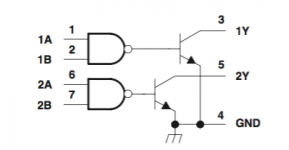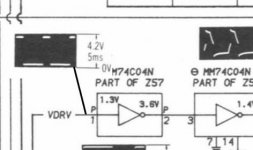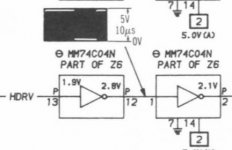Fooser
Experienced Member
Q2 is getting 5V on it's emitter. The base has 4.2V (or thereabouts, analog meter). The collector, however, has nothing.
I'll look for a source of the MPS3906.
I swapped out the MPS3906 with the new (haha) one and still no voltage on the collector. Dang... thought we might have had it nailed down.



